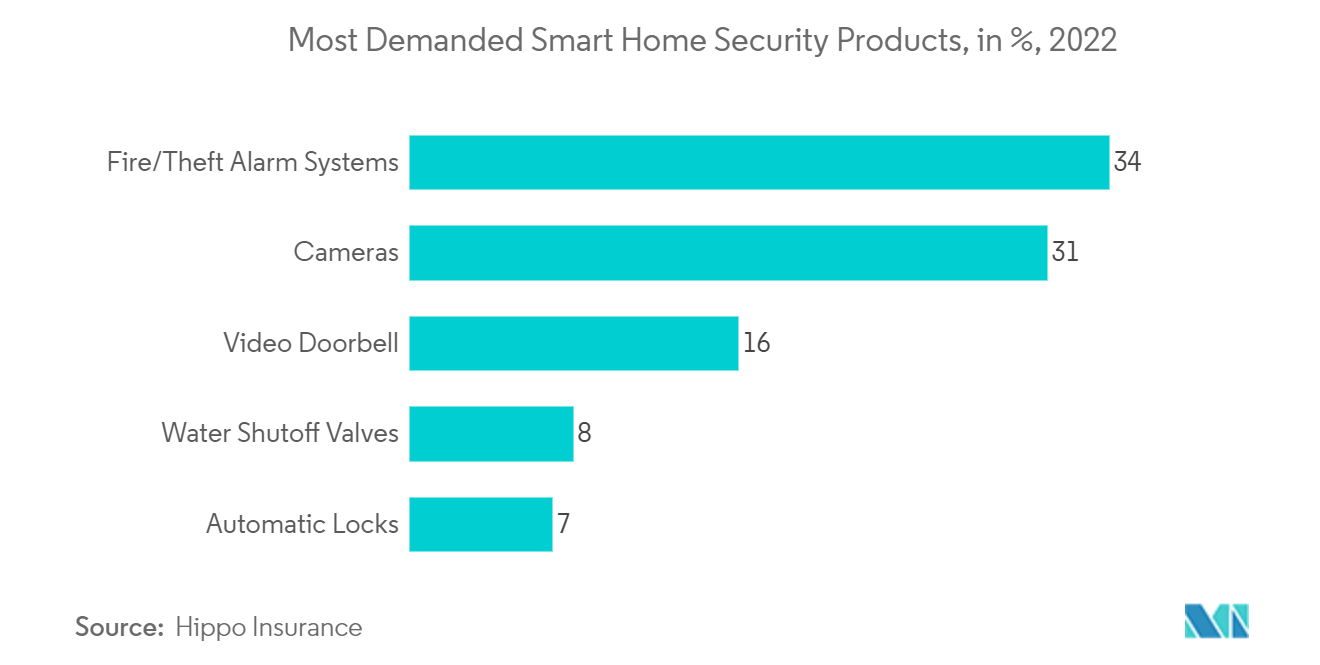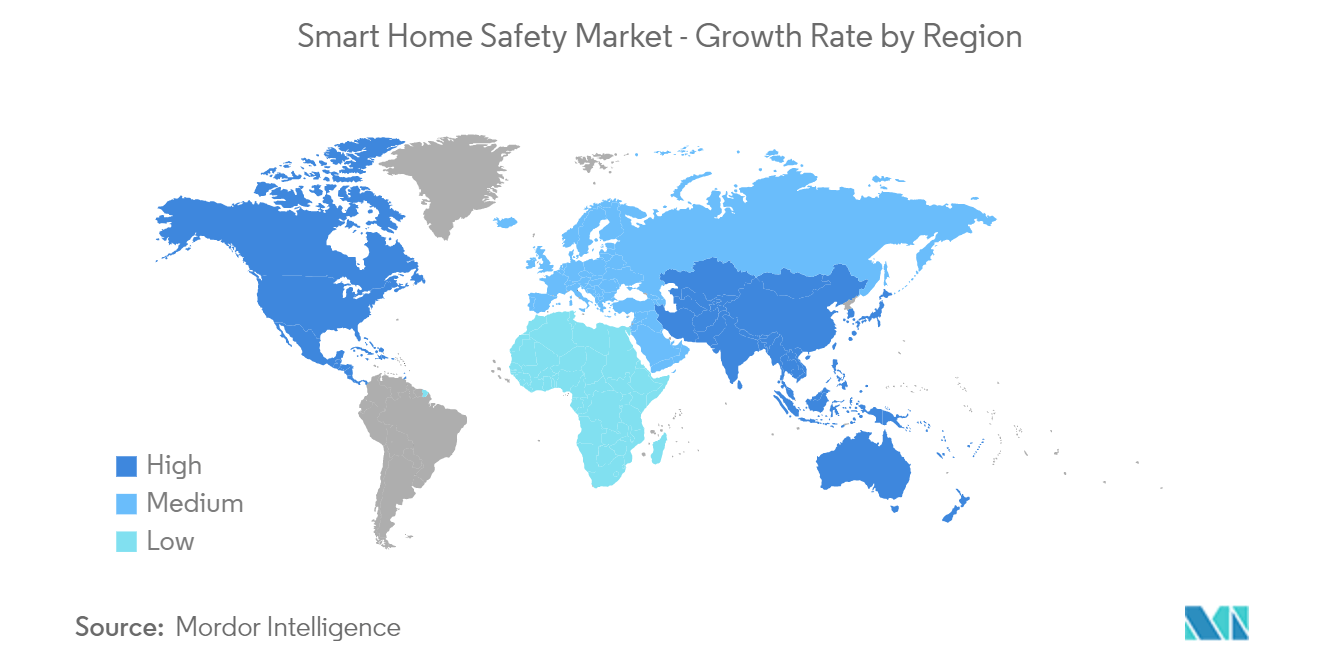Market Trends of Smart Home Safety Industry
Growing Awareness Regarding Home Security Systems
- The growing consumer propensity toward adopting and using connected devices is augmenting the demand in the market studied. For instance, as per Jaze Networks, the global internet-connected devices per person is expected to reach 15 by 2030.
- Furthermore, the statistics from the National Council for Home Safety and Security suggest that 47% of millennials in the United States own smart devices, while 70% of those who already have one smart product portray a likeliness to opt for other smart devices.
- Such trends create an ecosystem more favorable to the growth of the studied market, as connected devices offer a significant benefit and convenience at home. The new features, connectivity capabilities, and functionalities they bring make the implementation task of smart home safety devices easier and simpler.
- Moreover, according to the Continental Automated Buildings Association (CABA), the installed bases of smart home devices in the United States are expected to reach 2691.8 million in 2023. According to a recent survey by Hippo Insurance, convenience is the most significant factor for consumers to add smart home devices (46%), with fire-theft alarm systems ranking as the top protective device( 37%) followed by 36% of men and women ages 35 to 54 having a thought that cameras provide the most protection for their homes, while 14% of women ages 25 to 34 opting automatic locks as the most protective smart home device. Additionally, according to Hippo Insurance, in 2022, fire and theft alarm was among the most demanded (34%) home security product, followed by Camera (31%), and Video doorbells (16%), among others.

Asia-Pacific Accounts for Significant Market Share
- China is at the forefront when it comes to the adoption of the latest technological innovation. The increasing adoption of AI technology leads to a rise in demand for the smart home market in the country. The State Council of China recently detailed its strategy to become the leading AI superpower by 2030 by building a USD 150 billion national AI industry.
- The favorable policies and the onset of IoT laid a solid foundation for the smart home market in the country. GSMA estimates that China may account for approximately 4.1 billion IoT connections, almost one-third of the global IoT connections, by 2025. Furthermore, initiatives such as Smart Cities Projects, National New-type Urbanization Plan, and the Made in China 2025 strategy are expected to fuel China's smart home safety market.
- Companies are fighting for a stake in this market as more AI-powered security cameras are installed in homes, providing homeowners with improved security features, including timely intruder alerts or notifications when their loved ones arrive home.
- New product launches are among vendors' major business strategies to expand their market presence. For instance, in July 2022, EZVIZ expanded its product line of smart home safety solutions in India with the EZVIZ TY1, Wi-Fi Pan & Tilt Camera. This 4MP camera provides a superior indoor home security experience. With a 360-degree field of vision, smart tracking function, and H.265 Video Technology, these products allow users to monitor their premises in 2k resolution at all times.


